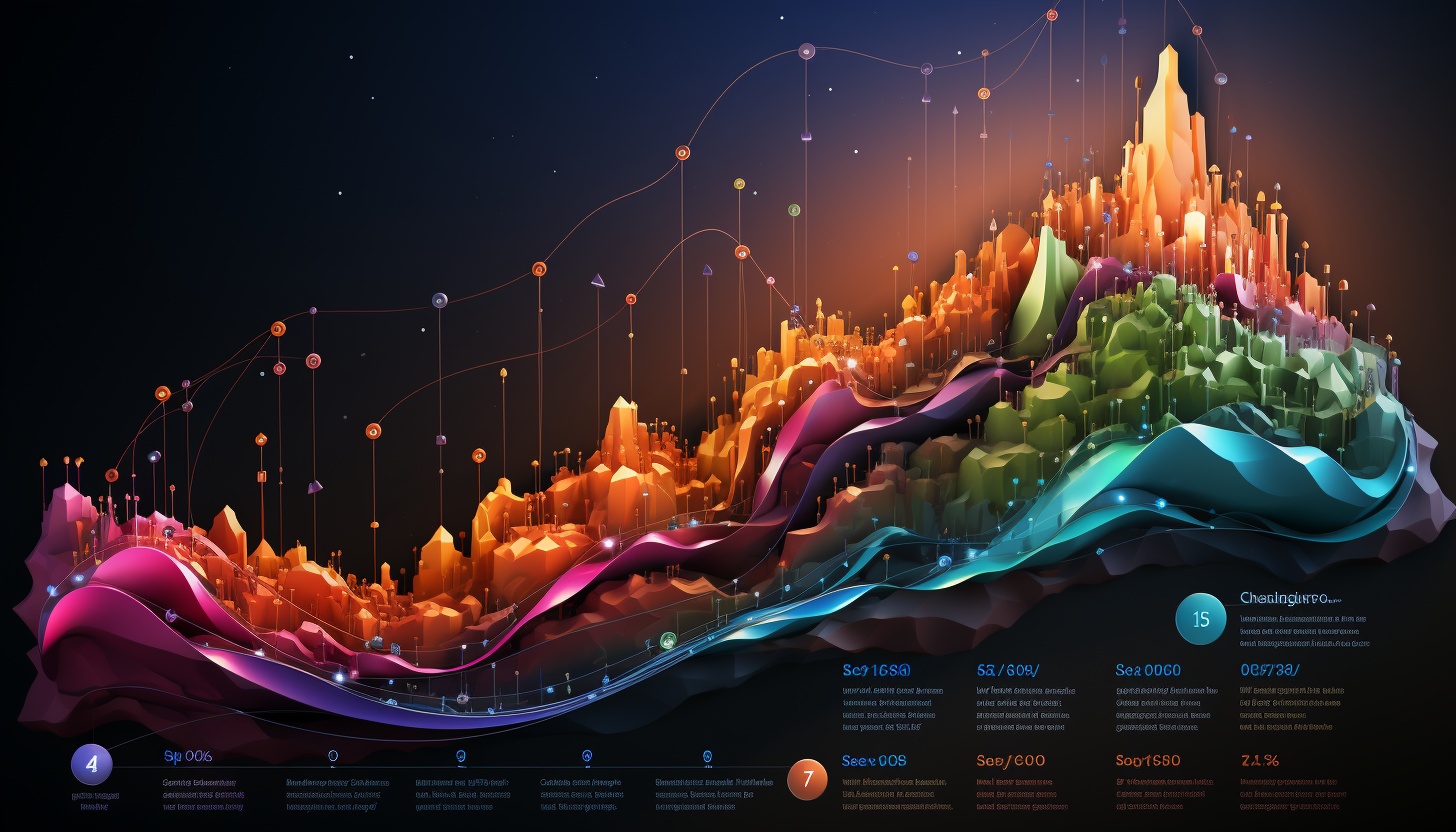
Love in Numbers: Key Statistics and Trends in Online Dating
Are you ready to dive into the world of online dating?
Brace yourself for a whirlwind of numbers, statistics, and trends that will give you a clear picture of what’s happening in this digital love landscape.
From user demographics and popular platforms to success rates and preferences, we’ll analyze the data and uncover the truth behind finding love in the era of technology.
So, grab your calculator and get ready to uncover the secrets of love in numbers.
User Demographics and Growth Rates

As a user of online dating platforms, you may be curious about the demographics and growth rates of this ever-expanding industry. Understanding the user demographics is crucial for both the users themselves and the platforms that provide the services. According to recent studies, online dating is popular across various age groups. It’s not just for the younger generation; older adults are also actively participating in online dating. In fact, the 55-64 age group has shown the highest growth rate in recent years.
The gender distribution on these platforms is relatively balanced, with a slightly higher percentage of men compared to women. However, this ratio can vary depending on the specific platform and region. It’s interesting to note that online dating has become more socially accepted and mainstream, with an increasing number of users from diverse backgrounds and communities.
In terms of growth rates, the online dating industry has experienced significant expansion over the years. In 2019, the global online dating market was valued at around $3 billion and is projected to reach $4.2 billion by 2024. This growth can be attributed to factors such as advancements in technology, increased internet penetration, and changing societal norms.
Popular Online Dating Platforms

Explore the landscape of popular online dating platforms and discover which ones are gaining traction among users of all ages and backgrounds.
Online dating has become increasingly popular in recent years, with a plethora of platforms available to cater to different preferences and needs. Here are two sub-lists highlighting the most popular online dating platforms:
General Dating Platforms:
– Tinder: Known for its swipe-based matching system, Tinder is one of the most widely used dating apps globally. It appeals to a younger demographic and offers a large user base, making it easier to find potential matches.
– Match.com: With a focus on long-term relationships, Match.com utilizes a comprehensive matching algorithm to connect users based on their interests, values, and goals. It’s popular among older adults seeking meaningful connections.
Niche Dating Platforms:
– Bumble: This platform empowers women by requiring them to make the first move. It appeals to individuals looking for more control and equality in the online dating process.
– eHarmony: eHarmony uses a detailed compatibility quiz to match users based on their personality traits and values. It caters to individuals seeking serious, long-term relationships.
These platforms have gained popularity due to their user-friendly interfaces, innovative features, and successful matchmaking algorithms. Whether you’re looking for casual dating or a committed relationship, there’s a platform out there that suits your needs.
Success Rates and Relationship Outcomes

Now let’s delve into the success rates and relationship outcomes of online dating, continuing our exploration of the landscape of popular online dating platforms.
When it comes to measuring the success rates of online dating, it’s important to consider how success is defined. For some, success may be finding a long-term committed relationship, while for others it may simply be finding a compatible partner for a casual dating experience.
According to a recent study conducted by the Pew Research Center, around 30% of adults in the United States have used online dating platforms. Out of these users, around 12% reported that they’d entered into a committed relationship or got married as a result of meeting someone online. This suggests that online dating can indeed lead to successful outcomes for a significant portion of users.
However, it’s also important to note that not all online dating experiences lead to long-term relationships. In fact, the same study found that the majority of online daters reported having experiences that were either neutral or negative. This highlights the importance of managing expectations and being aware that success rates can vary depending on individual circumstances.
Online Dating Preferences and Trends

Understanding the preferences and trends in online dating can provide valuable insights into the ever-evolving landscape of finding love in the digital age. Examining the data reveals several interesting patterns:
– Demographic Preferences:
– Age: Young adults in the 18-34 age range make up the majority of online daters, with a significant increase in usage among older adults in recent years.
– Gender: Men are more likely to initiate contact, but women tend to be more selective in their responses.
– Popular Platforms and Features:
– Mobile Apps: Dating apps have gained immense popularity, with their convenience and accessibility.
– Swipe Culture: The rise of swipe-based apps has revolutionized the way people browse and make connections.
– Niche Dating: Specialized dating platforms targeting specific interests or communities have gained traction.
These preferences and trends reflect the changing dynamics of online dating. As technology continues to shape the way we interact and connect, it’s crucial to explore the impact of these advancements on the online dating experience.
Impact of Technology on Online Dating

Technology has significantly transformed the landscape of online dating, revolutionizing the way people connect and find love. With the advent of smartphones and dating apps, the process of meeting potential partners has become more accessible and convenient than ever before.
One of the key impacts of technology on online dating is the ability to expand the dating pool. In the past, people were limited to meeting potential partners within their immediate social circles or geographic locations. However, with online dating platforms, individuals now have access to a vast network of potential matches from all over the world.
Moreover, technology has also made it easier to filter and search for compatible partners. Dating apps utilize algorithms and data analysis to match users based on their preferences, interests, and compatibility. This has led to more efficient and targeted matchmaking, saving users time and effort in finding suitable partners.
Additionally, technology has also changed the way people communicate and interact in the online dating space. Messaging features and video calls allow individuals to get to know each other before meeting in person, enabling a deeper level of connection and reducing the risk of disappointment.
Conclusion
In the world of online dating, love is a numbers game. With a growing user base and a multitude of platforms to choose from, the possibilities are endless.
However, success rates and relationship outcomes vary. It’s important to stay up-to-date with the latest preferences and trends to maximize your chances of finding a meaningful connection.
Just like a mathematician solving an equation, finding love online requires patience, strategy, and a little bit of luck.






